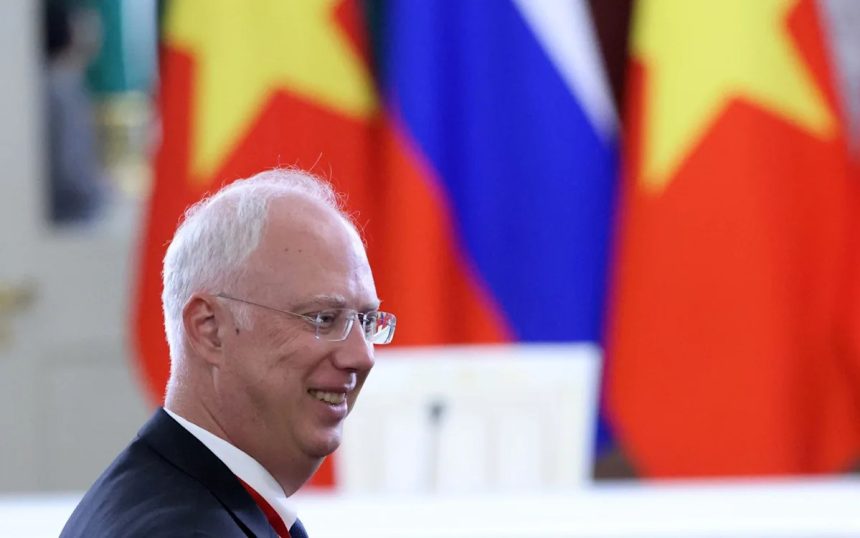When Vladimir Putin’s Harvard-educated right-hand man Kirill Dmitriev stepped off a plane in Miami for talks with Donald Trump’s top negotiator, few knew of the visit.
Weeks later, reports of a “secret” 28-point peace plan to end the war in Ukraine began to surface.
The initial plans appeared to be full of Russian talking points, and shocked Ukraine’s allies – driving a wedge between the US and Europe.
For clues about exactly who drafted the terms of the deal, observers pointed to an accidental tweet by Steve Witkoff, the president’s special envoy, who welcomed Mr Dmitriev to Florida last month.
“He must have got this from K,” he wrote in a quickly-deleted post sharing a report by Axios that a secret proposal to end the war had been drafted.
The “K” in question, critics of the deal believe, was Mr Dmitriev, the Kremlin’s long-time emissary currently under US sanctions and the only figure in the outlet’s report willing to be quoted.
What seemed like high-level peace talks, now appears to have been widely drafted between Mr Dmitriev and Mr Witkoff, with Kyiv and some parts of the White House kept in the dark.
Kirill Dmitriev and Steve Witkoff during a meeting in St Petersburg in April – Vyacheslav Prokofyev/Reuters
“This hasn’t been a negotiation. This literally is the Russian ideas typed up,” a source close to the administration told The Telegraph.
As officials and the media alike try to retrace the sequence of events, experts have suggested the leak was an intentional campaign designed to sow confusion and normalise Russia’s demands.
“They do this thing, this sort of thing as a shaping operation to establish this outcome in the minds of the Western public and the media, so that everybody else has to fight back from it,” Keir Giles, author of the Handbook of Russian Information Warfare, said.
“We shouldn’t rule out the fact that the United States has been taken by surprise by this, like everybody else. Some factions within the US administration have been blindsided by this.”
A close ally of the Russian president, Mr Dmitriev has taken a leading role in peace talks and has met with Mr Witkoff several times this year.
He is deemed so influential that he and his fund, the Russian Direct Investment Fund, were blacklisted by the US in 2022 following Russia’s invasion.
The sanctions effectively bar American citizens and companies from dealing with him.
Yet Mr Dmitriev was granted a special waiver to allow his arrival to Miami, where the 28-point plan for ending the war was thrashed out.
The controversial plan, which would force Ukraine to give up the Donbas and half the size of its army, blindsided US officials in various corners of the administration and stirred confusion in Europe.
Even Mr Trump and Marco Rubio, the US secretary of state, were some of the last to hear about the plan, Bloomberg reported. But the US president signed off on the plan once he had been briefed.
The agreement would also ban Nato troops from Ukraine and foreign fighter jets would only be allowed to be stationed in Poland.
In return for peace, Russia will be given the entire Donbas region and Crimea.
All frozen assets will be handed back to Russia and it will be allowed back into the G7, making it the G8.
“Some false articles claimed that Russia leaked the US plan to Axios. Barak Ravid can confirm that Russia did not leak the plan or its existence/details,” Mr Dmitriev wrote on X.
Mr Rubio found himself defending a plan many have speculated he never saw. He denied claims that the draft was written by Russia and then translated clumsily into English.
Despite his protests, it has become increasingly clear that large parts of the White House were left in the dark over the proposal.
“In order not to look like idiots, they [White House] seem willing to pretend that they were in control of the process all along, which means that they endorse all of these impossible demands by Russia,” Mr Giles added.
“So Russia sets a marker for normalising the idea that this is, in fact, a peace plan, and then everybody has to fight back against that normalisation.”
The crisis exploded on Saturday when top senators publicly recounted a private call with Secretary Rubio, who was en route to Geneva for talks on the plan.
Insiders say that Mr Rubio was tasked with delivering the deal to the Senate but he informed them that the document “was not the administration’s plan” and was “essentially the wish list of the Russians”.

Marco Rubio, the secretary of state, held peace talks with a Ukrainian delegation in Geneva on Sunday – Fabrice Coffrini/AFP
“Marco’s mission was to sell it to the Senate. That’s where strength is. He basically coughed up the fact that it was a Russian deal and that they hadn’t negotiated anything,” the source added.
“Trump is angry that the guys have basically told him, the deal is dead.”
On Sunday, Mr Trump’s frustration reached boiling point as he said Ukraine has “zero gratitude” for his efforts to end the war.
“I inherited a war that should have never happened, a war that is a loser for everyone, especially the millions of people who have so needlessly died,” he wrote on Truth Social.
“Ukraine ‘leadership’ has expressed zero gratitude for our efforts, and Europe continues to buy oil from Russia. The USA continues to sell massive amounts of weapons to Nato, for distribution to Ukraine.”
In the end, it may have been an active measures operation that worked exactly as intended, sowing confusion in the White House and driving a wedge between the US and Europe.
It has left many experts grappling with a similar dilemma – is it Mr Trump or Putin shaping negotiations?









